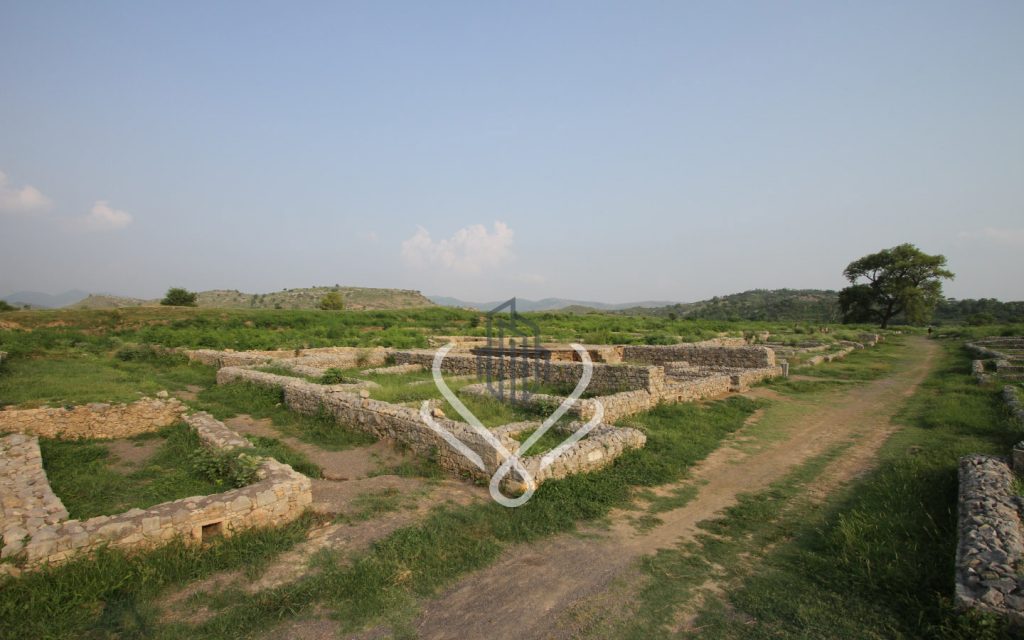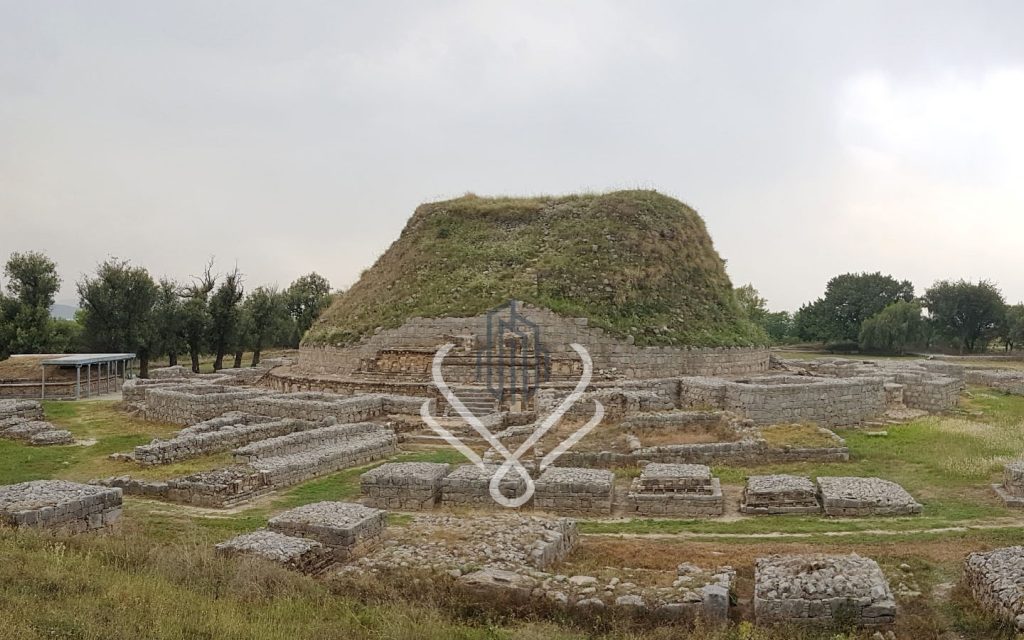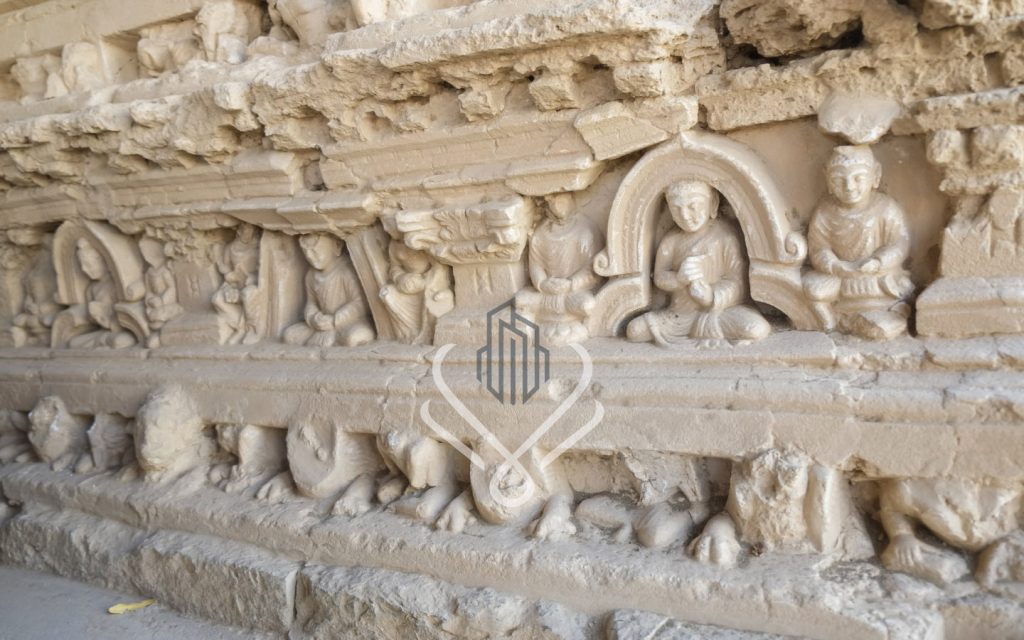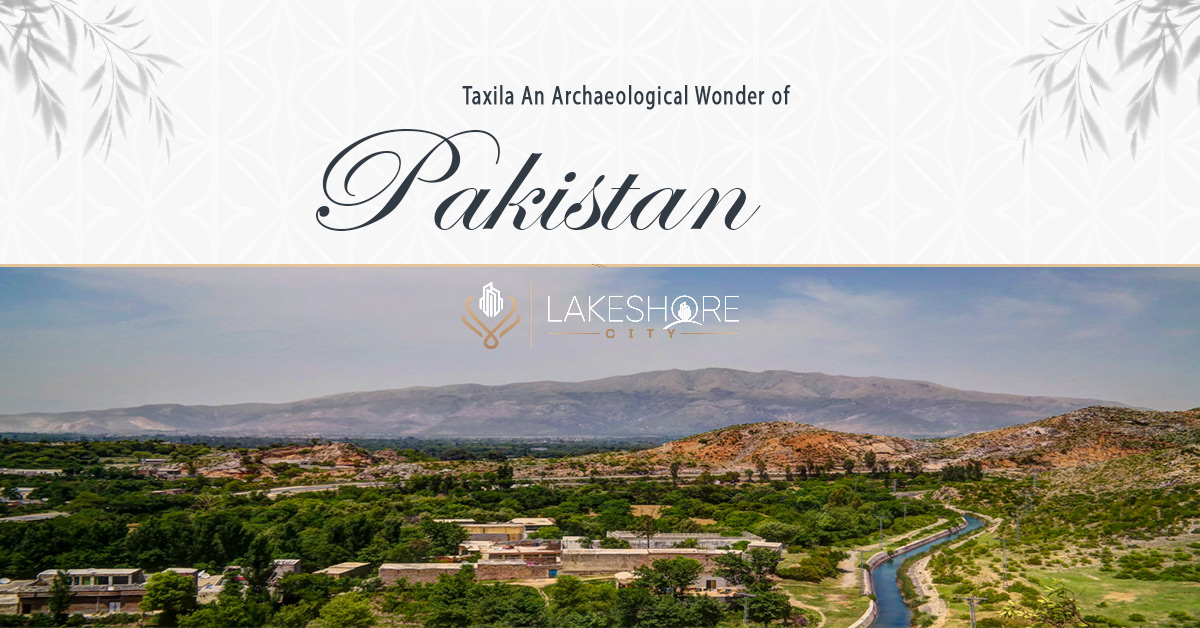Do you want to learn more about the culture and history of Pakistan by visiting the city of Taxila? If that’s the case, then read on for all the information you’ll need to arrange your visit to this ancient metropolis.
History of Taxila
The ancient city of Taxila was found in the region of Pakistan that is now known as Punjab. It was first uncovered by archaeologist Alexander Cunningham in the mid-1800s, and it has been a UNESCO World Heritage Site since 1980. The city’s original name, Takshashila, referred to the predominate building material of the time: cut stone.
Taxila had a pivotal role in the Kingdom of Gandhara, which ruled the area from roughly 1000 BC to AD 1000. Several successive dynasties took control of Taxila after that, all hoping to capitalize on the city’s strategic location along a major commerce route through South and Central Asia.
Modern buildings and neighborhoods can be found interspersed with ancient remains in today’s Taxila. Transportation is convenient and readily available for locals and visitors alike.
Where is Taxila Located and How to Get There?
About 30 kilometers from Rawalpindi and Islamabad, on the outskirts of the Potohar Plateau, is the city of Taxila. This old metropolis is conveniently accessible from both of these locations along the Grand Trunk Road. The route links up with the National Highway, so travelers coming from the south of Pakistan may easily reach Taxila. It takes about an hour to drive from Islamabad to Taxila. Meanwhile, a trip by car from Lahore can take up to five hours.
You can drive there, but taking a bus from Rawalpindi or Islamabad is also an alternative. If you don’t feel like driving, you can take a train from any place in Pakistan to a stop just outside the museum in Taxila.
Things to Do in Taxila – Excavated Sites and Other Attractions
Buddhist ruins and artifacts from the historical period are the sole reason for the city’s notoriety. Nonetheless, Hindu and Jain sites and artifacts have been discovered here as well.

In the beginning, Alexander Cunningham found the city. John Marshall, who was then the Director-General of the Archaeological Survey of India, led the excavation efforts. In addition, he is credited with unearthing Sindh’s ancient Mohenjo-Daro settlement. The excavations under his direction lasted for over two decades, from 1913 to 1934, and they uncovered many interesting sites. Below, I’ll elaborate on these points:
Bhir Mound
From what we can tell from excavations, Taxila consisted of three separate cities. The earliest of these is Bhir Mound, with structures dating back to between the sixth and fifth centuries BC and the second century BC.
Wood and stone dwellings with mud plaster and a main thoroughfare running through the middle of the city’s eastern neighborhoods attest to the city’s early development. The neighborhood’s drainage system is also carefully thought out. Important as it is, the Pillared Hall was constructed between 250 and 175 BC. When excavated, it revealed terracotta reliefs and divine figurines. It was probably a Hindu temple back in their early days. The mud and wood city walls can be seen in the Bhir Mound’s western section, which was excavated at a later time.
Sirkap
Sirkap is the name of a city in Taxila that comes from a myth. It used to be a walled city with formidable defenses. The city was founded in the second century BC, and its predominant residential architecture displays a Greek flavor. Notable ruins in this area include:

The oldest structure on the Indian subcontinent is a circular stupa. Apsidal Temple is a ruined Buddhist temple with a massive, circular hall serving as its centerpiece. A majestic temple with a double-headed eagle as its motif, the Double-Headed Eagle Stupa is backed by Corinthian columns.
The Jain Temple was built in the 2nd century BC and is now in ruins.
Sun Temple ruins have also been discovered in this area.
Sirsukh
Sirsukh, Taxila’s third city, was established in the late 1st century BC. The city is built in a rectangular shape on a flat plain and is protected by massive limestone walls. Within the wall itself are bastions, presumably used by archers to ward off attackers.
The Dharmarajika Stupa was constructed in the third century BC and stands at a height of 15 meters. A Buddhist monastery was located close by. ‘Chir Tope’ also means ‘Scarred Hill’ to the locals. The stupa has been meticulously maintained and is a popular tourist attraction. Numerous artifacts and bones of religious importance to Buddhists were unearthed during the stupa’s excavation as well.
Dharmarajika Stupa
The Kunala Stupa was built on top of an even older stupa that was destroyed sometime in the third or fourth century AD. Because of the myth that praying at this spot may restore sight, it attracted Buddhist visitors from all over the world.

Kunala Stupa
A monastery and a votive stupa can be found in the same complex as this stupa, which has been quite well-kept. There used to be 27 student rooms spread across two stories of the monastery, in addition to a pool with surrounding stone stairs, a kitchen, and a big communal hall. Its foundations were laid in the second century AD, and it has undergone numerous expansions and refurbishments since then.
Julian Stupa
There are remnants of a monastery and a university next to the Buddhist site of Jaulian Stupa, which dates back to the second century AD. The complex sits atop a hill with panoramic views of Taxila. The statue of a Healing Buddha, with a hole in its belly from when people used to stick their fingers in it to pray for a cure, is the site’s most famous artifact.

Jandial Temple
The remains of the Jandial Temple are impressive due to their resemblance to classical Greek architecture. The facade is influenced by the Greeks, but remnants and structural patterns within suggest that this was a house of worship for those who practiced Zoroastrianism.
Taxila Museum
Tourists should not miss the Taxila Museum while in the city, as it is home to the vast majority of the antiquities and antiques unearthed there. It houses thousands of artifacts, many of which originate from Gandhara. The museum is accessible at any time of the year and features artifacts primarily from 600 B.C.E. to 500 A.D.
Other Sites to Explore
Because Taxila has a very rich history, in addition to the larger attractions, there are a lot of additional, more intimate locations that you may check out during your time there. The following are some of the interesting locations:
- The archaeological site known as Khanpur Cave is a cave that dates back to the Mesolithic period and measures 25 feet in width and 10 feet in depth. In one spot, high up on the hill, researchers discovered a large number of tools that dated back to previous times.
- In the region around Sarai Khola, there is a mound known as Sarai Khola that provides evidence of prehistoric settlements dating back to at least 3300 BC.
- Khader Mohra is a region that is located to the southeast of Dharmarajika and has only had sporadic excavation done there.
- The archaeological site of Kalawan consists of several caves in addition to a monastery and a few smaller stupas.
- The Giri Complex was constructed somewhere between the 10th and 14th centuries after the common era, and it is home to several Buddhist monasteries in addition to the ruins of a mosque with three domes, a mausoleum, a school, and a fort.
- Lalchak, Badalpur, Pippala, and Bhallar are some of the locations in the surrounding region that are home to their very own stupas in addition to monasteries.
Those who are interested in making the trip to Taxila will find that the city has a lot of options for exploration. You can find miniature statues of Buddha, reproductions of artifacts, coins, and other trinkets at one of the many souvenir stores if you want to bring some mementos back for the people you care about.
Conclusion:
Taxila, an ancient city located in present-day Punjab, Pakistan, is a remarkable archaeological wonder that offers a glimpse into the rich history and diverse cultures of the region. With its roots dating back several centuries BC, Taxila was a thriving center of commerce, education, and spirituality. The city’s excavation sites reveal a blend of Buddhist, Hindu, and Jain influences, showcasing impressive structures like stupas, temples, monasteries, and more. The Taxila Museum is a treasure trove of artifacts that further enriches the understanding of the area’s past. Today, Taxila stands as a UNESCO World Heritage Site and a unique destination for those interested in exploring the historical and cultural heritage of Pakistan.
Frequently Asked Questions (FAQs):
Q1. What is the history of Taxila?
Taxila, also known as Takshashila, is an ancient city in Pakistan’s Punjab region. It played a significant role in the Kingdom of Gandhara from around 1000 BC to AD 1000 and was a major hub along a vital trade route through South and Central Asia.
Q2. How do I get to Taxila?
Taxila is conveniently located about 30 kilometers from Rawalpindi and Islamabad, accessible via the Grand Trunk Road and National Highway. You can drive from nearby cities or take a bus or train. It takes approximately an hour to drive from Islamabad and up to five hours from Lahore.
Q3. What are some notable sites to visit in Taxila?
Taxila boasts several excavated sites, including Bhir Mound, Sirkap, Sirsukh, Dharmarajika Stupa, Kunala Stupa, Jaulian Stupa, Jandial Temple, and more. These sites feature ruins of ancient cities, stupas, temples, and monasteries, reflecting various religious and architectural influences.
Q4. What is the significance of the Taxila Museum?
Taxila Museum houses a vast collection of artifacts unearthed from archaeological sites. These artifacts date primarily from 600 B.C.E. to 500 A.D. and provide insights into the artistic, cultural, and religious heritage of the region.
Q5. Are there other sites to explore around Taxila?
In addition to the major attractions, there are other fascinating locations in the surrounding region, such as Khanpur Cave (dating back to the Mesolithic period), Sarai Khola (prehistoric settlements), Khader Mohra, Kalawan (caves and stupas), Giri Complex (Buddhist monasteries), and various stupas and monasteries in Lalchak, Badalpur, Pippala, and Bhalla.
Our Featured Article:
Read More: Promoting Tourist Attractions for a Better Image of Pakistan
Read More: Dubai’s Diversified Approach Leads to Surge in Tourist Numbers
Don’t miss the chance to invest with Lakeshore! Secure your investment today by investing your financial investment with Lakeshore in the following available options like Lakeshore City, Lakeshore Club, and Lakeshore Farms.
For More updates, please Contact +92 335 7775253 or visit our website https://lakeshorecity.com/
Lakeshore City is the upcoming elite lifestyle at Khanpur Dam. Offering no parallel amenities for the members and owners of distinguished farmhouses.
Become Part of Luxurious Lifestyle
Contact: 0335 7775253



